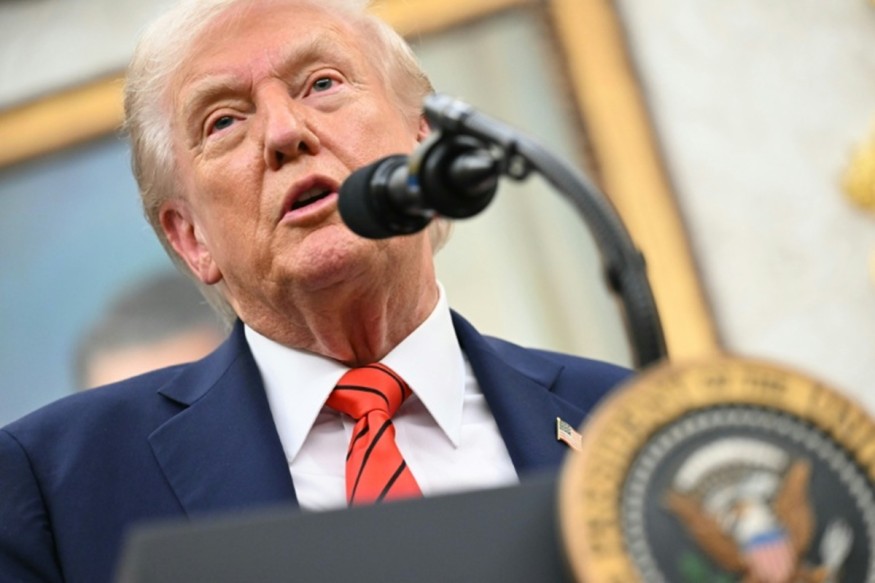Student Loan Forgiveness Scandal: Trump's 'Hidden Loophole' Could Betray Millions Still Drowning in Student Debt
Millions of student loan borrowers could miss out on promised relief

The US Department of Education announced on Friday, 17 October, that federal student loan forgiveness will resume for borrowers enrolled in specific income-driven repayment (IDR) plans, including Income-Based Repayment (IBR), Pay As You Earn (PAYE) and Income-Contingent Repayment (ICR).
The move, made under Donald Trump's administration, follows months of legal pressure from the American Federation of Teachers (AFT), which sued the government over delays and processing failures in the existing program.
While the decision offers relief for thousands of eligible borrowers, critics warn that millions could still be excluded because of a 'hidden loophole' in the new rules — a gap that may prevent many long-term borrowers from receiving the debt cancellation they were promised.
The Policy in Brief: Who Qualifies and Who Doesn't
Under the restarted programme, borrowers who meet the qualifying criteria under IBR, PAYE or ICR can have their remaining federal student loan balances forgiven after 20 or 25 years of payments (depending on the plan) or after meeting other eligibility thresholds.
As reported by the New York Post, the deal will affect more than 2.5 million borrowers enrolled in the ICR and PAYE plans.
Crucially, the ED's agreement ensures that the date of eligibility counts as the effective discharge date, meaning borrowers eligible in 2025 should not face a tax liability on cancelled debt under the American Rescue Plan Act exemption that expires at the end of the year.
However, borrowers enrolled in newer or suspended plans, notably the Saving on a Valuable Education (SAVE) Plan, remain excluded from the relief until further notice.
That exclusion is at the heart of what critics describe as the loophole.
The Hidden Loophole: Who's Being Left Behind?
The apparent loophole lies in this: only those enrolled in certain IDR plans will benefit under the resumed cancellation process. Millions of other borrowers, on the SAVE plan, standard repayment plans or loans taken after key dates, remain ineligible despite having student debt and often similar financial burdens.
While the exact number of excluded borrowers is still being tallied, reports indicate that about 2 million borrowers may qualify immediately under IBR.
As reported by Education Data Initiative, more than 42 million Americans hold federal student loan debt. But with millions still potentially excluded, critics argue the policy shift leaves a large segment in limbo.
Borrowers in public-service roles or those stuck in forbearance may find months of qualifying payment counting delayed or unrecognised. The AFT has flagged this as a 'betrayal' of expectations and trust.
Political and Financial Fallout for the Student Debt Landscape
Financially, the timing matters: the tax-exempt status of forgiven student debt under the American Rescue Plan ends on 31 December 2025. Borrowers whose forgiveness is processed after that date could face tax bills.
The ED's agreement attempts to protect eligible borrowers by back-dating discharge, but uncertainty remains.
Politically, the move by the Trump administration to resume forgiveness after a pause is seen as part of a broader reform of the student-loan system, including phasing out older IDR plans by July 2028 and replacing them with more restrictive alternatives.
Some analysts interpret the shift as a strategy to reshape the student debt relief landscape rather than an outright expansion of benefits, hence the suggestion of a scandal or hidden agenda.
What Borrowers Should Do Now
Borrowers with federal student loans should check whether they are enrolled in IBR, PAYE or ICR and whether they have met or are close to meeting qualifying payment counts.
Those eligible for forgiveness in 2025 should ensure their loan servicer has recognised the effective date of discharge to avoid unexpected tax bills in 2026.
Borrowers on other plans, especially the SAVE plan or standard repayment plans, should monitor communications from the ED and consider consulting a student-loan adviser to explore transfer options or plan changes.
Originally published on IBTimes UK
Subscribe to Latin Post!
Sign up for our free newsletter for the Latest coverage!
© Copyright IBTimes 2025. All rights reserved.















